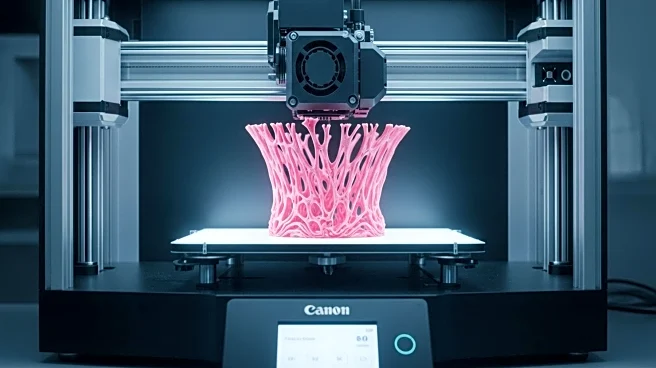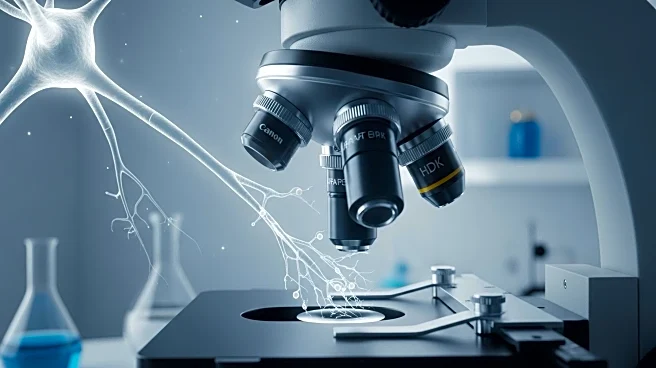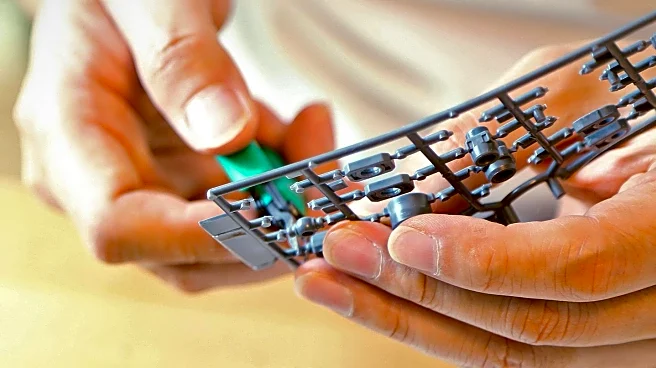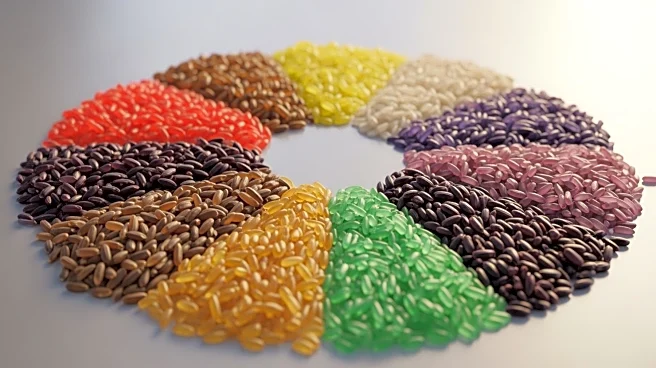What's Happening?
Researchers at the University of Washington and UW Medicine have developed a new 3D-printed device that significantly enhances the precision and complexity of human tissue models. This device, known as STOMP (Suspended Tissue Open Microfluidic Patterning), integrates seamlessly with existing tissue-engineering technologies, allowing scientists to recreate laboratory environments that mimic natural cellular conditions. The device enables the creation of distinct regions within suspended tissues, facilitating the study of complex conditions such as neuromuscular disorders. The research, published in Advanced Science, demonstrates the device's ability to model biological interfaces like bone and ligament, or fibrotic and healthy heart tissue. The development was led by Ashleigh Theberge, UW professor of chemistry, and Nate Sniadecki, professor of mechanical engineering, with contributions from various interdisciplinary teams.
Why It's Important?
The advancement in tissue engineering through the STOMP device holds significant implications for biomedical research and regenerative medicine. By providing greater control over the composition and arrangement of cells, researchers can better understand how different tissue types interact, potentially leading to breakthroughs in treating complex diseases. This technology could accelerate the development of new treatments and therapies, benefiting patients with conditions that currently lack effective solutions. The ability to model intricate biological systems with precision may also enhance drug testing and reduce reliance on animal models, aligning with ethical considerations in research.
What's Next?
The STOMP device opens new avenues for research teams to explore tissue engineering and cell signaling. As the technology gains traction, it is expected that more research groups will adopt this method, potentially leading to collaborative efforts across disciplines. Future studies may focus on refining the device's capabilities and expanding its applications to other areas of medicine. The ongoing support from institutions like the National Institutes of Health and collaborations with pharmaceutical companies suggest continued investment in this promising technology.
Beyond the Headlines
The development of the STOMP device highlights the growing importance of interdisciplinary collaboration in scientific research. By combining expertise from chemistry, mechanical engineering, and bioengineering, the project exemplifies how diverse fields can converge to solve complex problems. This approach may inspire similar collaborations in other areas of science and technology, fostering innovation and accelerating progress.













